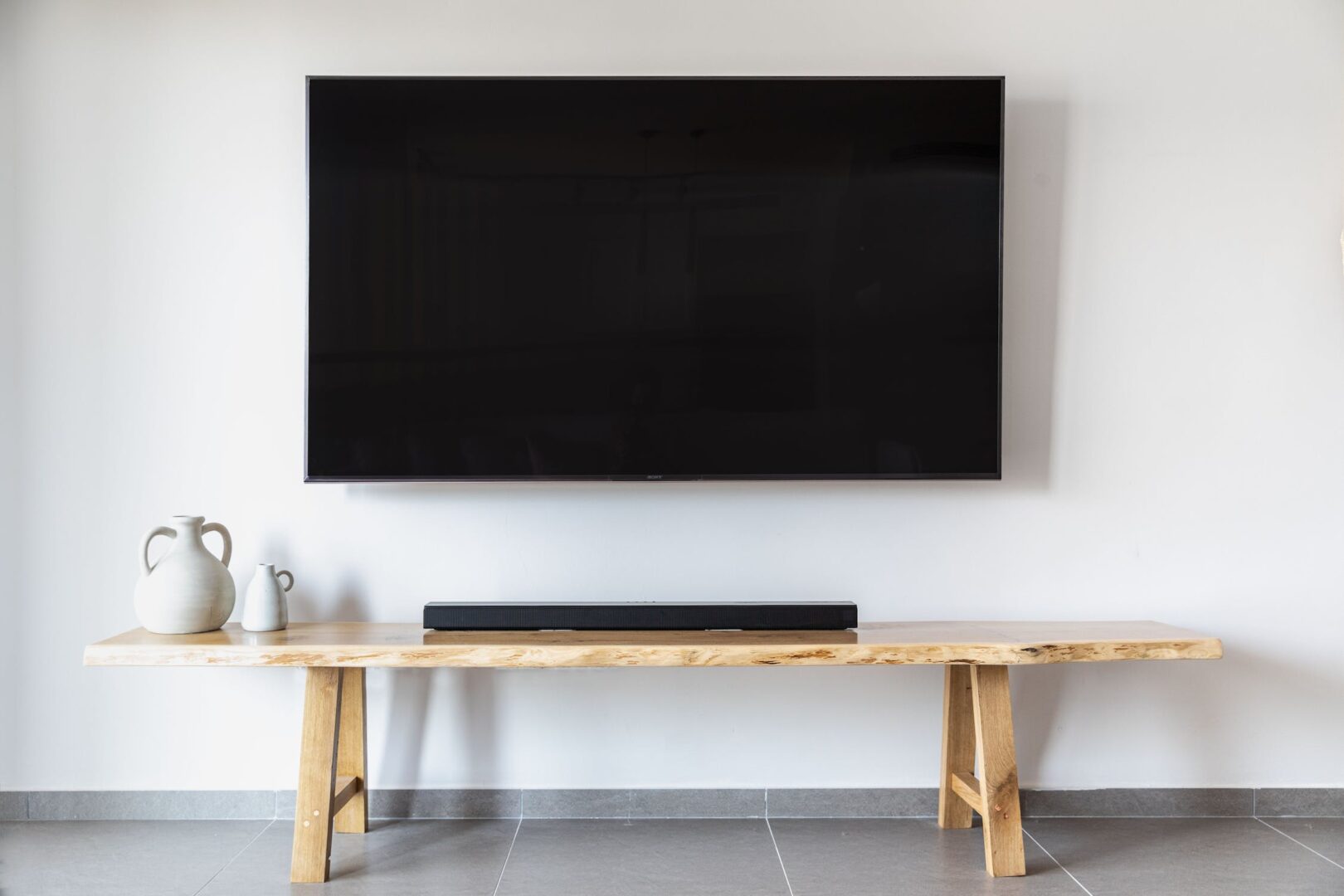When Should You Replace Your TV? (Important Signs To Watch)
When Should You Replace Your TV? (Important Signs To Watch)

Getting a new TV has to be one of the most exciting things in my opinion.
The pure joy and anticipation of how your favorite shows & movies will look on your new screen is something that’s truly special.
But the amount of time that TV lasts depends directly on the conditions you keep it in, and how much you use it daily.
So how do you know when you should replace your TV?
Well there’s typically a few signs to be aware of so let’s dive right in to answer that very question!
(Also since it’s the holidays, here’s the best TVs for 2024-2025 in my opinion)
https://easyhometheater.net/the-best-tvs
When Should You Replace Your TV?
You should replace your TV when you begin to notice a dramatic reduction in the screen’s brightness, clarity, or color vibrancy – which typically happens well after a decade. While dependent on a wide variety of factors, I’ve found that TVs tend to physically last around 13 years, but are succeeded in terms of their feature set in roughly 6 years.
How Do You Know Your TV Needs Replacing? (Signs Your TV Is Going Out)
The Screen Looks Dimmer
One sign that your TV might unfortunately be on the way out is you notice that’s it’s looking a lot dimmer than usual.
This might be something that’s gradual or even immediate, but a decrease in luminosity is a key indicator that it could be time for a replacement.
I would first check to see if any settings were accidentally turned on though since that could also be the reason.
If there’s an ambient mode enabled in the settings, it could be reacting to the lighting conditions in the room so turn it off if enabled to see if that makes a difference.
Then check the backlight setting to see what it’s set at and try increasing that to see if it helps.
I would also check the gamma setting to see if adjusting that helps any.
Also, any settings with the word dynamic or something similar could be messing with the black levels in the image so it’s possible that changing this could remedy the issue.
But if adjusting the settings and even switching to a different picture mode entirely doesn’t help, then your TV might need replacing.
Less Vibrant Colors
Piggybacking off the last point of a much dimmer screen being a sign it might need to be placed, a similar indication that your TV might be dying is the colors it produces aren’t nearly as vibrant as they once were.
First, before anything though, ensure none of the settings related to color weren’t accidentally changed on your display.
A changed color value can affect your picture’s display dramatically so definitely make sure it wasn’t reduced.
Also see if changing the picture mode helps any and if your TV supports it, ensure the HDR setting for your TV is actually on.
I know that some TVs actually allow you to change which HDMI ports pass through 4K & HDR signals, so make sure the port you’re using has passthrough for those features enabled in the menu if it supports it.
Picture Quality Isn’t As Sharp
If you notice your TV as of late is starting to look fuzzy or it lacks clarity, then it may be indicative of a failing panel — although not always necessarily.
I say that because an incorrect sharpness setting can majorly impact how clear the image looks.
Even though it’s often recommended to keep this setting at 0 for accuracy sake, some displays can actually do the opposite by introducing an intentional blurring of the image.
So a good rule of thumb for the sharpness setting that l feel often looks good is 1 or 2 clicks above or below the 20 percent of the maximum value.
For example if your sharpness setting goes to 20, then 20 percent of that value would be 4.
So turning the sharpness to 5 or 6 (above) or 3 or 2 (below) might give a good result visually.
But every person along with every television is different so if the picture doesn’t look right by your own eyes, try increasing or decreasing the sharpness to see if it helps.
Also make sure the resolution on the device your TV is connected to is set at the highest resolution since otherwise it might look off.
Random Pixels Aren’t Working
The occasional dead pixel isn’t likely anything to worry about, and might have even been there from the start.
However if you start suddenly noticing a bunch of these pixels that simply aren’t working then this might indeed be a sign that something is awry.
Blue pixels are the most likely to stop since the amount of energy needed for them to emit light at a normal level is much higher than red or green and so tend to burn out at a higher rate.
Though advances in display technology have greatly improved the issue compared to how it use to be, there’s still the possibility that those pixels give out first.
If you notice discolored pixels though, then these are known as stuck pixels which may be reversible since they still technically function.
Using a soft cloth to massage the area of the screen affected and/or playing particular test sequences can potentially alleviate the issue.
By using a pixel test, you’ll be able to identify if there’s any pixels that aren’t working correctly.
However if it’s a large number of them that’s easily visible then that’s a sign of a mechanical failure.
Noticeable Image Retention
Image rention simply put, is when a static element that’s left on screen for an extended period of time (like a brand logo or news ticker) is visible on the screen even when that piece of content or movie isn’t technically playing.
It’ll often be the most visible when the screen is bright and typically only really affects OLED screens due to the way they work.
Newer OLED tvs luckily have features that greatly reduce the occurrence of this happening, but if you have an older television then there’s a much greater chance that it could develop some degree of image retention.
HDMI Ports Stopped Working
If you notice that one of your HDMI ports abruptly stopped functioning or receiving signal, then there’s likely some form of internal failure in the components of your TV.
Unfortunately once one fails for good, there isn’t really an easy way to fix this.
In addition to this if you do notice a port fails, the potential that subsequent ports fail may be a possibility so that’s something to keep in mind.
There’s always the possibility of the wire itself being the culprit too so make sure there isn’t any fraying or bends in the wire that could be causing issues.
Check Availability Of High Speed HDMI Cable
White Levels Seem Green Or Reddish
Something else that might tell you that it might be time to soon replace your TV screen is you notice that the screen itself is starting to look green reddish when it didn’t before.
This could be for any number of reasons from panel failure, to an abundance of stuck pixels, to even an incorrect tint or color temperature setting; but just know that a change in the white levels of your television screen could possibly indicate a future issue with its capabilities.
Artifacts Or Lines Across The Screen
This is certainly one of the more obvious signs but if you begin to notice artifacts or lines beginning to spread across the TV when you turn it on, then that’s a big sign that it may be time to replace it since it indicates a failure of the panel itself.
Other Reasons Someone Would Want To Replace Their TV
Your TV Now Seems Small
Now there’s other reasons one might want to replace their current television even if it’s working fine.
One good reason is it now seems small.
Initially it might have seemed like your TV was grandiose, but if you’ve gotten accustomed to it over the years then you might now be finding it to not be as impressive as it once seemed.
So getting a larger TV to recapture that initial feeling of awe might be a reason someone would want to upgrade.
To Fully Utilize New Devices & Gaming Consoles
Let’s face it, technology moves fast and with that comes new devices designed to be the most compatible with those newer screens.
In addition, if you’re a gamer, newer consoles like the Xbox Series X and PS5 have all sorts of visual features like high refresh rates and 8K resolutions that newer screens support.
However if you have an older display then you wouldn’t be able to fully take advantage of all the features they have to offer and thus wouldn’t be getting the full experience.
By getting a newer TV that supports those features, you’re then able to experience a much different way of playing your favorite games.
To Future Proof Your Viewing Experience
Finally with things like Dolby Vision, 8K resolution, etc. slowly but surely gaining traction, you might just feel the need to future proof yourself for when these newer features eventually become more mainstream.
By getting ahead of the curve and opting for a feature rich display, you allow yourself to experience the latest in visual technology ahead of time.
How Many Years Should A TV Last?
So as for the original question and the very point of this entire article, how many years should a TV last exactly?
Well there’s actually 3 answers to that question suprisingly.
There’s a number of things that impact the duration of your tv’s lifespan from the temperature of the room it’s placed in, to how long the screen itself is actually on daily.
Even the type of TV it is and its build quality play a massive part.
But what I’ve found from personal experience is the amount of time a TV lasts physically, as in how long it’ll actually show a picture before not working adequately is about 13ish years.
Again I want to reiterate that this number can vary wildly depending on a number of factors that can make it last longer or shorter — but on average that’s just what I’ve personally found so by no means is that definitive.
However the amount of time before you start to notice issues with the screen may be a slightly shorter time period than that.
I noticed that around about year 11 is where visual abnormalities tend to occur with a screen.
This could be a dimming in the backlight, pixels starting to not work, etc.
Of course not always, and it might even be perfectly fine by that point, but that’s just the point in time I tend to notice a change.
Now another way to look at how long a TV lasts is the amount of newer devices that sport features your current TV can’t take advantage of — or even just newer types of televisions themselves!
This could be a new display technology, a newer form of HDR, a higher resolution, etc and while much less necessary than the TV not physically working itself, a growing number of newer devices with higher specifications could also give you the itch to upgrade.
With that metric, TVs tend to be outdated in terms of the newest features by year 6 give or take from what I’ve noticed.
That’s if you’re talking about the very latest in display technologies and want absolutely no compromises with your entertainment experience.
Again whether it’s worth upgrading for that is completely up to the individual, but from my experience, that’s just what I noticed personally.
What Tvs Would I Recommend?
With all of that said, what tvs would I recommend?
Honestly it’s a difficult question since there’s a lot of good options out there and what someone is looking for in a TV might not be what someone else is looking for.
For recommendations at different sizes, this might help.
https://easyhometheater.net/the-best-tvs
But for brevity sake, these are 2 tvs I think are pretty awesome.
Check LG OLED C2 TV Availability
Check Samsung Q60B series TV Availability
Final Thoughts
To wrap things up, the basic takeaway here is that the time to replace a TV is going to depend on a number of factors — and the introduction of newer display features can certainly play a role in that decision.
But with proper care, your TV should last quite awhile.
Hopefully this helped clarify the original question and you now have an idea of what to look for when it comes to identifying signs that your TV might be failing.
That’s pretty much it for now though.
Until next time, make it easy, keep it simple.
About Me






Leave a Reply